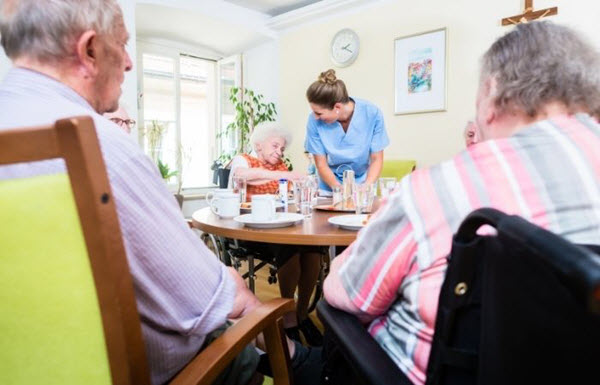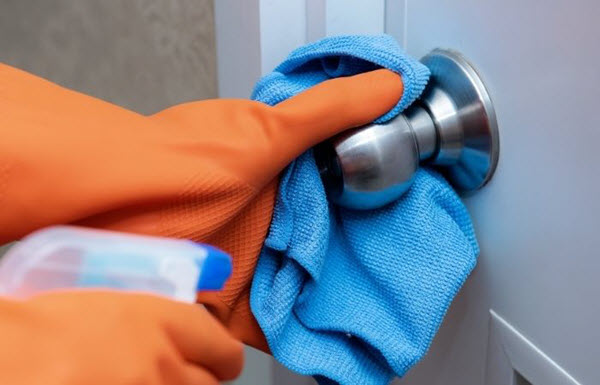A New Way to Model Your Nursing Homes
By Brian Wallace
January 10, 2024 • Fact checked by Dumb Little Man

The pandemic has, of course, affected virtually everything but one entity that stands out: nursing homes. You can combat this problem with sleek, modern design. The reputation before the pandemic hit was already at a low, but now the pandemic has exposed and opened up many new issues for nursing homes. This only puts the health of these senior citizens at a greater risk.
These current nursing homes face a variety of issues, such as poor living conditions and health code violations. In fact, 94% of nursing homes were cited for these violations, and 17% of these violations caused tangible, physical harm, like bedsores, medical confusions, bad diets or nutrition, and abuse and neglect.
Such problems cause serious concern, since the need for nursing homes has been on a continuous rise. 65-year-olds have a 70% chance of needing long-term care, and 20% will require care for more than five years. In fact, around 5% of Medicare-enrolled 65-year-olds reside in a nursing home.
Many nursing homes also face financial issues as well. From 1999 to 2008, 50% of hospital-based facilities closed down, 11% of freestanding facilities shut down, 10% of rural facilities closed down, and many more issues. If nursing homes do not reach a certain standard, they become at a greater risk for closure.
These problems are often heightened if they deal with poor recreation options, and poorly constructed physical design, in addition to high overhead costs, poor medical reimbursement, and biohazard safety breaches.
Factors like these necessitate a change in structure and design, but it is first essential to understand architectural design basics for nursing homes. All nursing homes require a basic layout, including patient rooms, lobby spaces, public and private bathrooms, staff rooms, and food preparation areas.
Design is important to these facilities, as it is a place of residence for these senior citizens, and it is essential to the foundation that it is solid and structured. Different units include custodial — for bathing, feeding, and medicine administration, in-house — for in-home room and board, dietary, recreational, and rehabilitation — to strengthen and repair.

Nursing homes must be constructed with the patients, family, and staff in mind to create a welcoming and productive place. They should use ergonomic appliances and technology, as well as high-quality, budget-friendly, and economical technology to ensure thorough care and attention.
Important products that require the intersection between safety and quality include therapy types, appliances, medications, recreations, and flooring options.
To design a modern nursing home, builders must take into account key considerations. One part of this is the need to understand your audience, who the patients are, how many patients, the length of their stay, what equipment is necessary, and the daily traffic.
Furthermore, designers should consider the interior of the space, including how many rooms, safety standards to be met, and what kind of ambiance is trying to be created, and how residents will perceive it.
Additionally, designers should analyze the variety to be placed within the building, from private to public spaces and an outdoor area.
It is vital that the budget is centered around the quality of care when constructing these nursing homes. The appeal of nursing homes must recuperate for the bad reputation that has been set for it. In order to do this, you must efficiently build these homes.
That includes automating repetitive tasks by finding technology that would allow employees to focus on other work and eliminate unnecessary tasks. The focus should be on the patient, so building these homes should follow the same and emphasize the quality of life. You should create large rooms with safety options and, again, consider the audience, creating an aesthetically appealing environment.
You should invest in cost-effective architecture to minimize expenses, including luxury vinyl tile for smooth and fall-proof surfaces and stone particle composite for waterproof abilities. During the pandemic especially, you must consider sanitation as means of curbing the spread of germs through antibacterial disinfectants and other tools to keep the patients’ health at the forefront.

Lastly, the nursing home’s overall feeling is crucial: it should feel warm and homely, personal, not cold or institutional. The place should feel like an invite, and it is important to keep this idea in the back of your mind as you build the future of nursing homes.
Brian Wallace
Brian Wallace is the Founder and President of NowSourcing, an industry leading infographic design agency based in Louisville, KY and Cincinnati, OH which works with companies that range from startups to Fortune 500s. Brian also runs #LinkedInLocal events nationwide, and hosts the Next Action Podcast. Brian has been named a Google Small Business Advisor for 2016-present and joined the SXSW Advisory Board in 2019.


